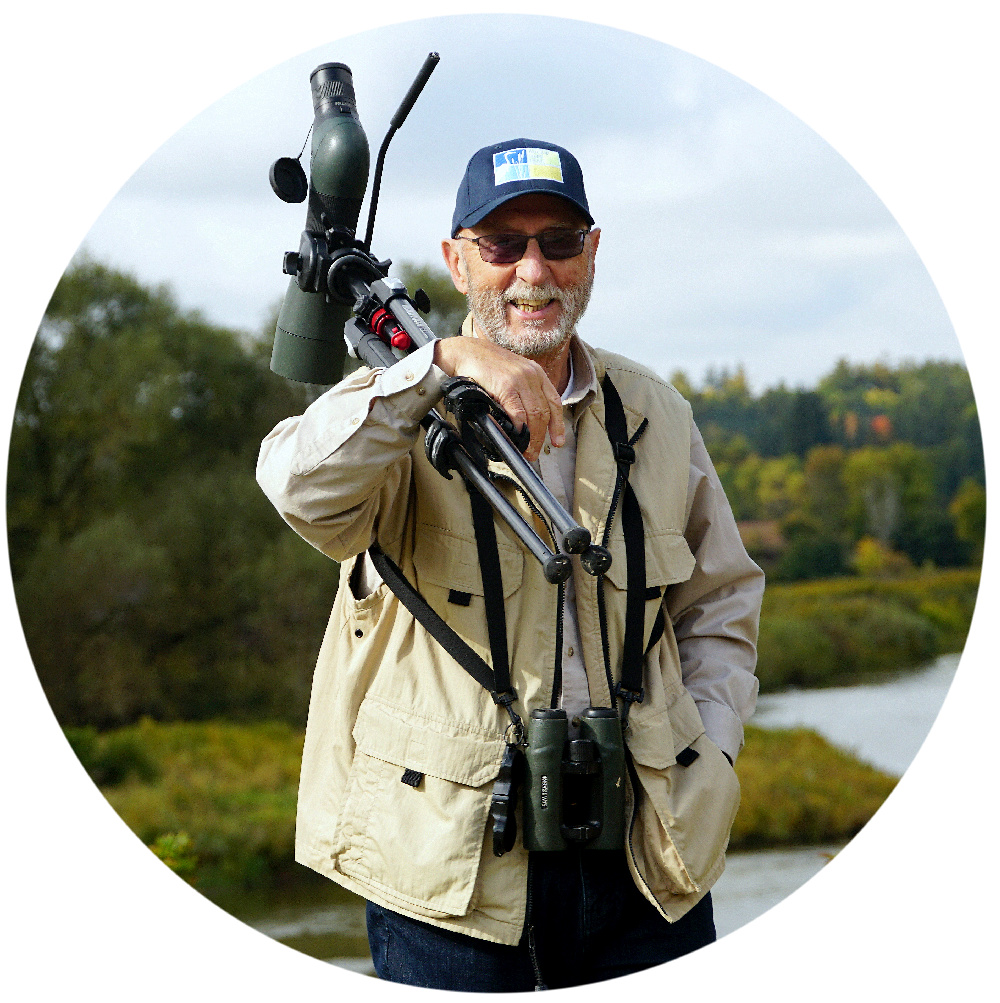I have been a fluviophile for as long as I can remember, going back to the earliest recollections of childhood when walking along the banks of a local stream was a favoured activity, and to fish for minnows in the shallows was the very essence of joy. Along the way I observed birds, newts, snakes, mammals that came to the water to drink or lived alongside it, and learned more than a little about riparian vegetation. I distinctly recall going to the library at a very young age to borrow books, and always being instructed to wash my hands first! Good advice to this day.
Obviously, at that stage my involvement was primarily experiential, but the die was cast for a lifetime of fascination with rivers, and I learned what makes a river a river, and came to understand some of the forces involved in the dynamics of a river, estuary, watershed, or floodplain. For some reason sedimentation has been a particular focus, although I am not sure why.
I have been horrified more than once at the degradation I have witnessed as magnificent rivers are turned into sewers and repositories of all manner of human junk, especially the pernicious, never-ending stream of plastic waste.
This book, therefore, is a veritable source of wonder for me. Ellen Wohl is a distinguished scientist who has received many awards throughout her illustrious career, yet in this book she presents herself as a story teller, delivering a pleasing combination of history, geography, geology, hydrology and personal recollection. She does not shy away, even for a moment, from delivering scientific facts, yet it is done in a manner that enables the reader to follow along without feeling overwhelmed. She eschews the use of arcane terminology unless it is critical to the text, but makes sure always to accompany it with an explanation when she does.
We learn a great deal about how the flow of rivers influences landscape and climate, wildlife and vegetation, and how deleterious human meddling and interference has often been - and continues to be.
It is trite to state that water is the essence of all life, yet we continue to value it less than destructive anthropogenic activity, or the quest for profit at all costs. To change our ways seems to be an impossible goal.
In the final chapter entitled The Future, Wohl examines the forces at play in the 21st Century - too much water in one place, drought in another, rivers drained of their water in so profligate a manner that they are dry riverbeds when they reach the ocean. In some jurisdictions rivers are now accorded legal personhood and perhaps therein lies a glimmer of hope for the future. After all, if a corporation - even one that systematically inflicts environmental Armageddon upon us all - can be granted legal protection in the courts, surely we can see the logic in extending the privilege to a river.
Indigenous wisdom would tell us it's the right thing to do. It is past time to listen.
Ellen Wohl
Hardcover - US$29.95 - ISBN: 9780691272474
304 pages - 5.5 x 8.125 inches (13.75 x 21.25 cm)
38 black-and-white illustrations
Publication date: 09 September, 2025
















Sounds amazing 👏
ReplyDeleteYou always pick fascinating books. Thanks for the review.
Delete...the Racquette River before it flows into Tupper Lake has a flat terrain that creates an oxbow. You can paddle around in circles and it's difficult to determine if you are going upstream or down.
ReplyDeleteMy wife might tell you I’ve been going around in circles as long as she has known me!
DeleteIt's so nice to read about your childhood memories, David. I also had a small stream near where I lived, and I was there every single day. I loved that stream so much. For me, it was the fact that there were so many flowers growing there that made me spend so much time there. The book you're reviewing sounds really nice. Small streams are worth their weight in gold!
ReplyDeleteHugs and kisses, Marit.
They really are, Marit. I remember the one I used to mostly go to as though it were yesterday.
DeleteA fellow fluviophile - I knew it! Rivers and streams were very important where I grew up, including the river that bisects the continent. This sounds like another book I need to add to my collection.
ReplyDeleteTambien me agrada la vista del agua sea río o sea mar.
ReplyDeleteSaludos.
Sounds like an amazing read. I grew up about a 30 minute walk to the Atlantic Ocean so if I wanted to see a river I had to travel to find it.
ReplyDeleteas a child I was the opposite of you, stayed away from water, ponds, oceans, rivers etc but you make it sound more exciting. I was afraid of the water and what was in them, now I would do much better. your are right no one is listening,
ReplyDeleteThis seems like an awesome reading. I looked up the author as I wasn't familiar with her work (I'm not necessarily a geomorphology person, sorry) and her works generally seems very interesting... books like Transient Landscapes. I hope to check some of them out.
ReplyDeleteHappy reading.
DeleteYour review conveys a deep, genuine appreciation for rivers and their intricate dynamics. I like how you highlight Ellen Wohl’s ability to blend science with storytelling making complex concepts accessible without losing rigor.
ReplyDeleteI would be interested in that book about the dynamic part of the territory and eco systems related to the river.
ReplyDeleteQuerido David me paso a leerte después de bastante tiempo, siento no tener tiempo para pasarme mas veces.
ReplyDeleteParece un libro muy interesante y a tener en cuenta. A mi me encantan los ríos y arroyos, son lugares llenos de vida a pesar del maltrato que se les da. Un fuerte abrazo para ti y para Miriam.
Great to hear from you, Lola.
DeleteSounds a great read.
ReplyDeleteAll the best Jan
That sounds wonderful. How I love water - moving or still. I doubt I will have time to track down and read this but thank you for alerting me to it - and its author.
ReplyDeleteWe’re all thinking of you, Sue.
DeleteIt's really a shame how some many people still have this very old fashion attitude not only about life on earth but also about the foundations of the earth itself. This sounds like another good book. It seems every river has their own "personality" depending on where they are.
ReplyDeleteWhile I can't say I've ever traveled the length of a river, I quite like standing on a bridge and watching as the water comes in my direction and than disappears underneath my feet.
ReplyDeleteAnd if the bridge is an old, old bridge, the pleasure is magnified.
DeleteWhat´s up
ReplyDeletedear friend o mine!
I share your love for rivers and nature, love this collection of books; it's rewarding.
Big kisses and a good night, dear Professor.
Gros bisous,
This is a wonderful book. Knowledge for any one that roams in nature.
ReplyDeleteI am always so happy to see countries cleaning up their rivers and have been sickened in the past seeing the appalling garbage thrown into them. Micro plastics are deadly menace and we're not doing enough.
ReplyDeleteXO
WWW
Seems an interesting book. Our streams are pretty good down here as in being clean.
ReplyDeleteBeautifully written review! I can almost hear the river flowing through Wohl’s pages.
ReplyDeleteThank you, Shiju.
DeleteYou write the best book reviews...and I have always learned new things from you. This sounds like a wonderful read.
ReplyDeleteDear David, thank you for sharing this review with us. I only have one question - how do you find so much free time to read so many books? haha. Greetings from Spain.
ReplyDeleteBeing retired helps, Guillermo.
DeleteLijkt een mooi boek.
ReplyDeleteFijn dat je er zo van geniet David.
Groetjes Tinie
I also think that rivers need protection, because they preserve the landscape and nature, David. There are rivers that are not looked after, flooded by tree trunks, spoiled and fallen trunks as a result of beavers' work. And man also adds waste from his activities to the river. In our city, the Neva River has become much cleaner because large treatment facilities have been built.
ReplyDeleteIn general beavers are beneficial in restoring the landscape.
DeleteThe author has a happy smile.
ReplyDeleteShe does indeed.
DeleteFluviophile is new word for me David. Certainly no shortage of water in my part of the world. We have some amazing rivers over here. Looks good for sure :-D
ReplyDeleteI am glad to have introduced a new word into your vocabulary, Ananka.
DeleteMaravilloso, me encantan los ríos y arroyos. Abrazos.
ReplyDeleteThis sounds fascinating, David. I will add this to the Christmas list. I know my oldest son would enjoy it
ReplyDeleteGreat. It will be a fine gift.
DeleteKiitos taas kerran mielenkiintoisen teoksen esittelystä.
ReplyDeleteSinulla on elinikäinen suhde luontoon, puron kanssakin teit tuttavuutta jo lapsena.
Minulla samoin oli kotini lähellä puro, se oli kiehtova. Minulla tosin ei ollut mahdollisuutta seurata puroa nähdäkseni eläimiä yhtä paljon kuin sinä. Silti puro pohjakivineen ja keväisin runsaine vesineen on edelleen mielessäni hauskana muistona.
Como leer un río, me gusta.
ReplyDeleteMuchas gracias, David.
Un abrazo desde Segovia.
I thoroughly enjoyed this book review, both reading about some of the fascinations of young David and because of the book itself. It seems like an important and fascinating book.
ReplyDeleteTruly sounds like a great book. Reading on the back cover of the list of her other books, I am thinking I would like those too. "Fluviophile" thanks for that word, I didn't know it. Must tell my brother, he is almost always fishing or hiking beside rivers.
ReplyDeleteFluviophile is a new word to me. Interesting to know there's a special name for folks like me who love rivers. The book sounds marvelously informative ... a treasure trying to educate the careless "human meddlers".
ReplyDeleteTe comprendo fluvialista. También hoy aprendí esta palabra. Pasear escuchando como corre un río, es una sensación única. se siente. Tenemos la suerte que el Río Cuerpo de Hombre pasa por Béjar y se puede ver por varios sitios. Lo paseamos mucho. Gracias por la reseña. David.
ReplyDeleteLos fuegos han mejorado, pero aún los hay.
Os deseo un buen fin de semana.
Un abrazo.
This is a thoughtful and engaging review You convey both the scientific depth and the storytelling charm of the book, while also highlighting environmental concerns and Indigenous wisdom. A compelling, reflective read.
ReplyDeleteGreetings from Indonesia
South East Asia
Well said, David. Thanks for sharing the book and your thoughts.
ReplyDeleteI guess I am a fluviophile too… but that is the first time I have used the word, and spellcheck does not recognize it.
ReplyDeleteFunny, until comments on this post started to tell me that it was a new word to many, I didn’t give it a moment’s thought. Certainly it has been a part of my vocabulary for a very long time.,
DeleteI first thought you created a new word, David - I knew what it meant, but I wasn't familiar with the term as being a real word, so I checked it out - it didn't turn up in one of my dictionaries, but in the other, so now I can declare myself proudly a fluviophile as well. This book sounds more than interesting and after reading a little bit about Ellen Wohl I now know that she also wrote some other very interesting books. I'm particularly interested in "Dead Wood: The Afterlife of Trees" - are you familiar with that one? Big hugs - Carola
ReplyDeleteI was unfamiliar with her work until now, Carola, but I intend to look for more.
DeleteTemat rzek, geologii dynamicznej, życia wkoło rzek, sprawy prawne w dobie suszy i powodzi to bardzo ważne zagadnienie na całym świecie. Dobrze, że ta książka powstała.
ReplyDelete